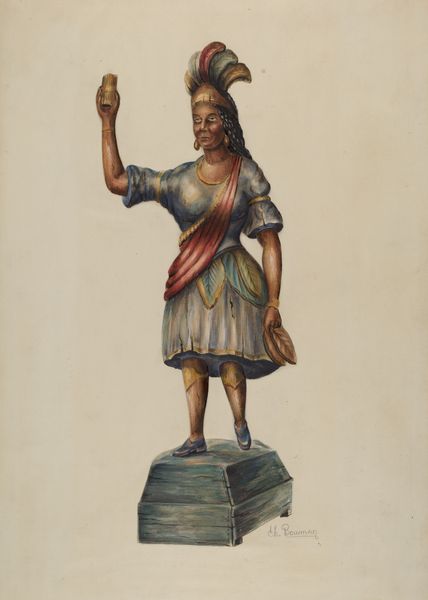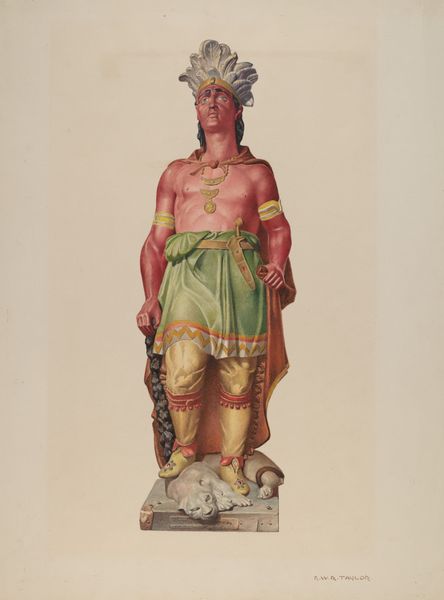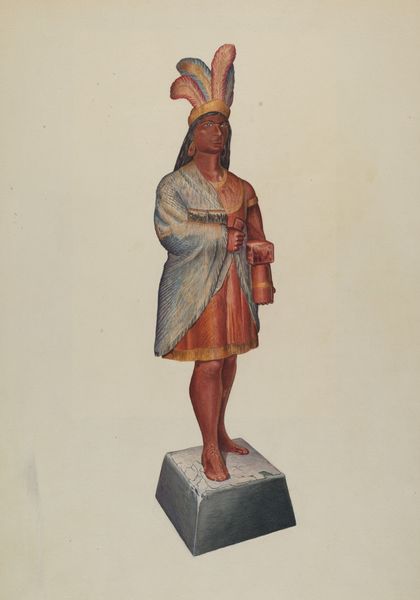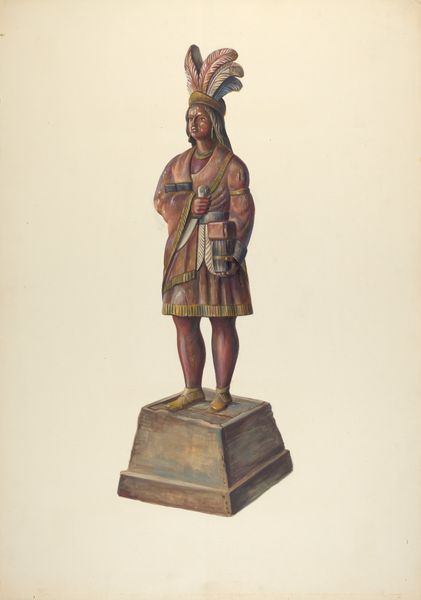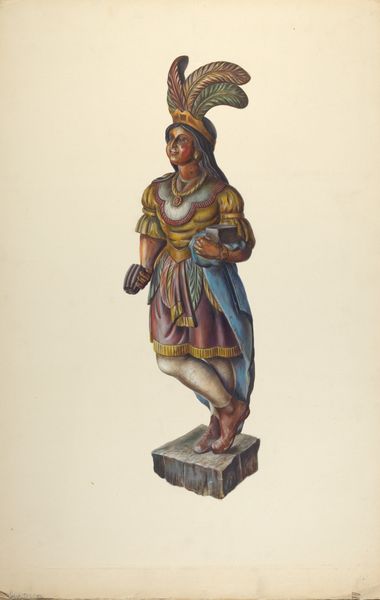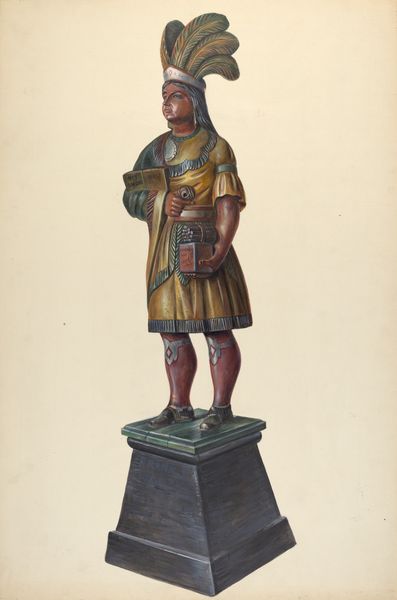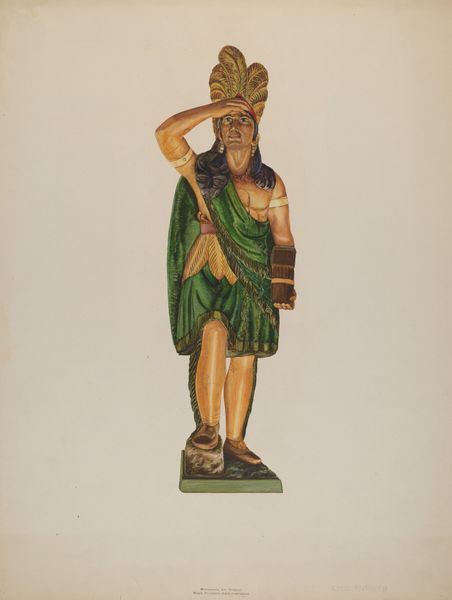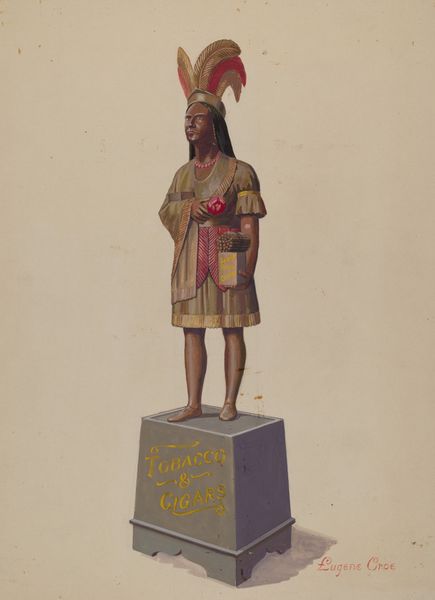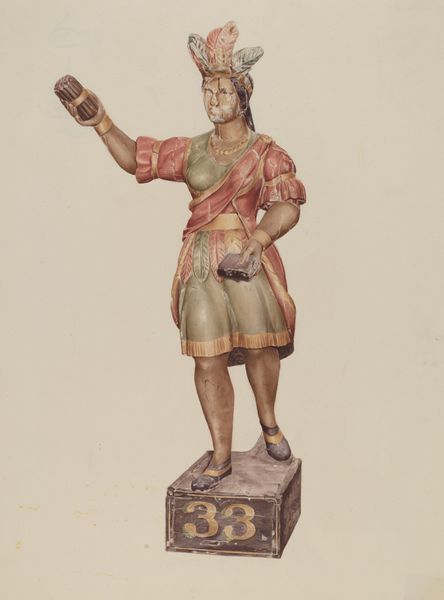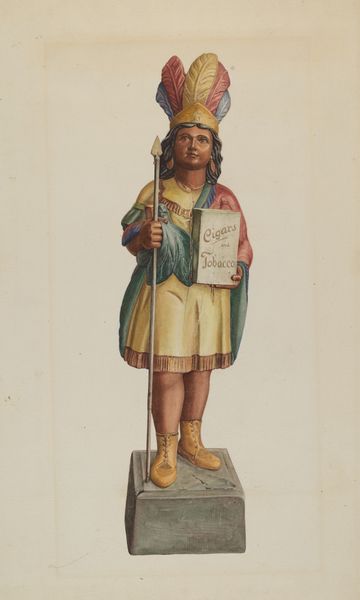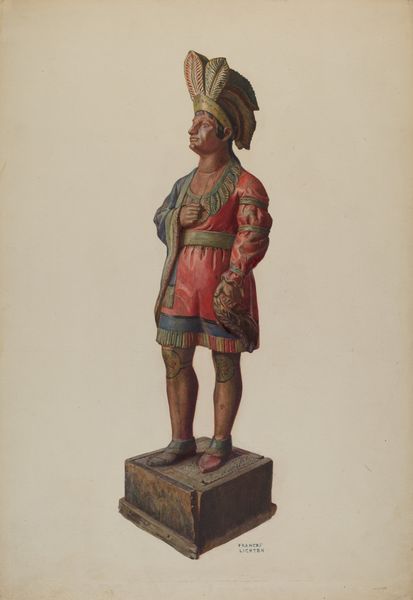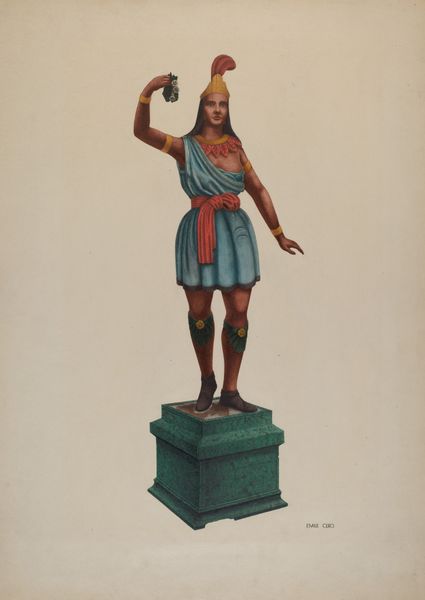
watercolor
#
portrait
#
figuration
#
watercolor
Dimensions: overall: 41.5 x 30.5 cm (16 5/16 x 12 in.)
Copyright: National Gallery of Art: CC0 1.0
Curator: Well, what strikes me immediately is the rather rigid and somewhat stilted pose. It's intriguing in its stillness. Editor: Indeed. We're looking at Lucille Lacoursiere's "Cigar Store Pocahontas," a watercolor and drawing made sometime between 1935 and 1942. The artwork depicts, predictably, a painted wood cigar store figure, mimicking a stereotypical Native American representation. Curator: The muted colors lend a vintage feel, as do the stylized rendering of the figure's features and clothing. What's particularly noticeable is the juxtaposition of supposed Native American regalia and a highly Europeanized form. It presents a distorted portrayal. Editor: Precisely. The layers of cultural appropriation here are profound. The title itself points to this uncomfortable space. Pocahontas, an actual historical figure, is commodified, reimagined as a symbol to sell cigars. The piece unveils the problematic relationship between image, identity, and commerce. Curator: It brings up uncomfortable but vital questions around cultural representation. What were the economic motivations driving these depictions? And how do such representations impact indigenous communities, both then and now? I keep coming back to that strange mix of power and powerlessness expressed in this single figure. She is selling tobacco yet divested of agency. Editor: The figure almost looks as if it's trapped between different worlds and times, hinting at larger questions about cultural imposition and loss. Its stiff posture feels like an attempt to hold ground amid swirling forces. And the slightly cartoonish style almost diminishes the pain and significance, adding layers of tragedy. Curator: Reflecting on the use of the artwork reminds me of the urgent need for respectful and inclusive representations. What appears decorative, even quaint, often reveals layers of oppressive intent that must not be ignored. Editor: This particular image is useful in unpacking, even today, how stereotypes can persist and shape our understandings of other cultures. It compels a deeper consideration of both intention and impact of popular art.
Comments
No comments
Be the first to comment and join the conversation on the ultimate creative platform.
